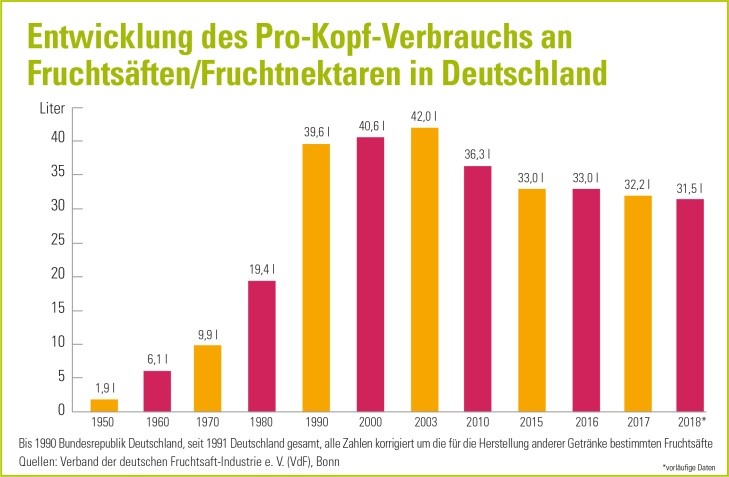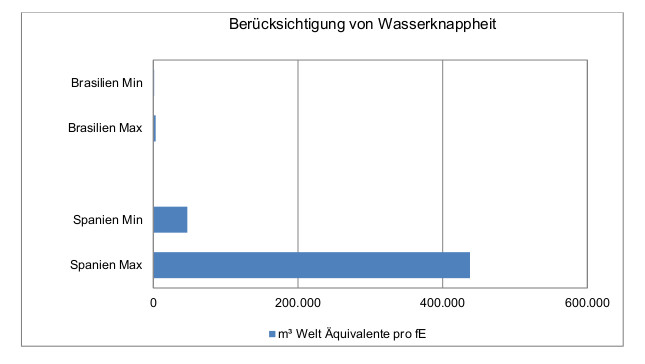In order to produce a litre of orange juice, the same amount of fruit must be cultivated for the juice from concentrate as well as for direct juice, which is why the effort involved in growing is not different. Due to the larger mass of direct juice compared to the orange juice concentrate, the environmental loads of direct juice caused by transport are naturally higher. This is ultimately the reason why the climate balance of the direct juice with approx. 720 kg CO2 equivalents is slightly less favourable than that of the juice from concentrate with approx. 690 kg CO2 equivalents. If the customer presses his or her own orange juice, the total amount of greenhouse gases (GHG) emitted is the lowest at approx. 650 kg CO2 equivalents, although the juice yield from self-pressing is lower than from the industrial production process. Despite the shorter distance, transport contributes significantly to the GHG balance. The transport of the whole orange by truck to the end customer is decisive here.
The picture on the left also shows that the climate footprint of apple juice from Germany is only about half as large as that of orange juice. The direct juice is more advantageous. This is mainly due to the fact that no energy is consumed in the production of concentrates.
Andreas Detzel
Dipl. Biology
Scientific and Managing Director
+49 (0)6221 4767 0
andreas.detzel@ifeu.de
Benedikt Kauertz
Dipl. Ing. Spatial and Environmental Planning
Scientific Director
+49 (0)6221 4767 57
benedikt.kauertz@ifeu.de






